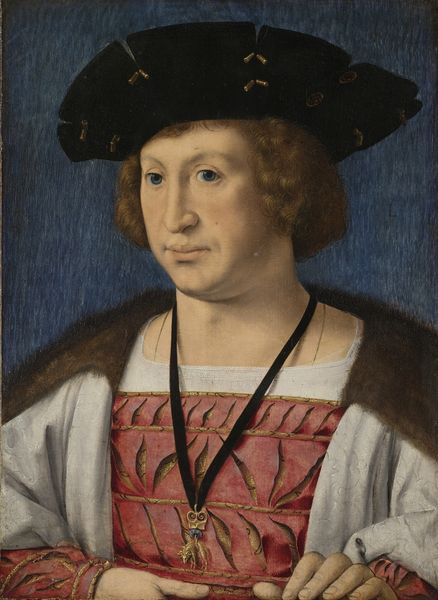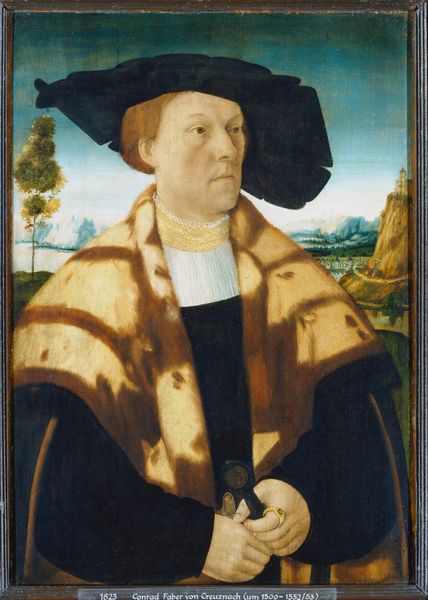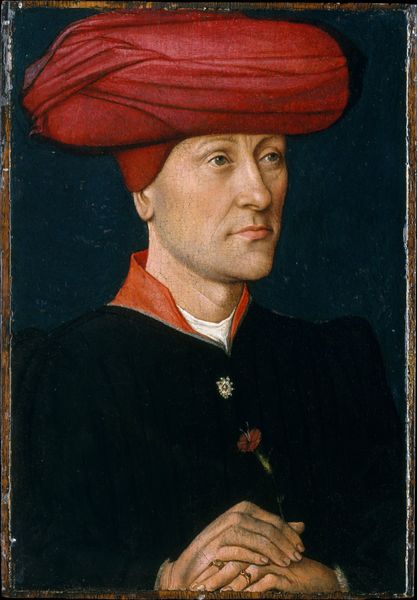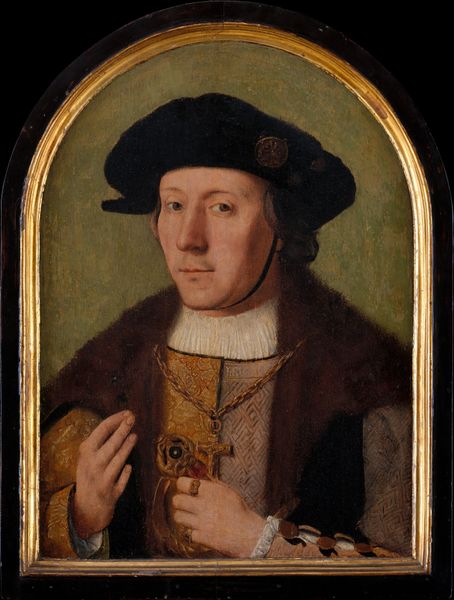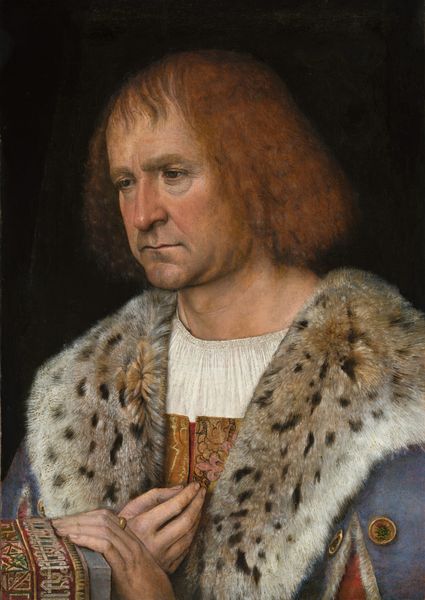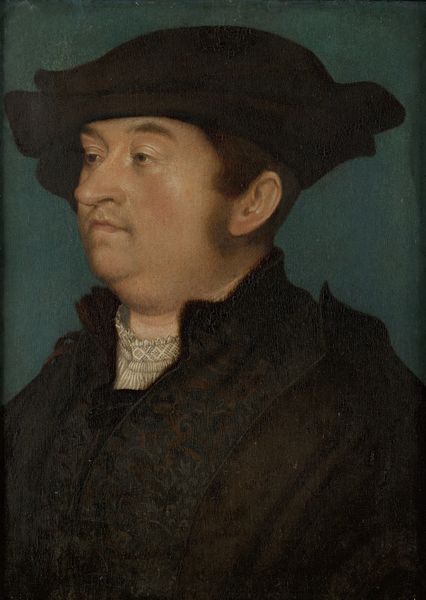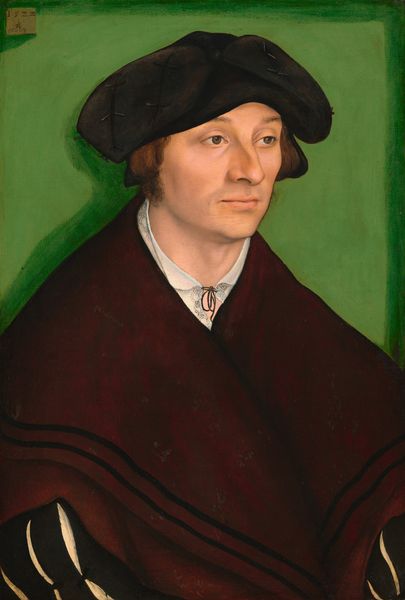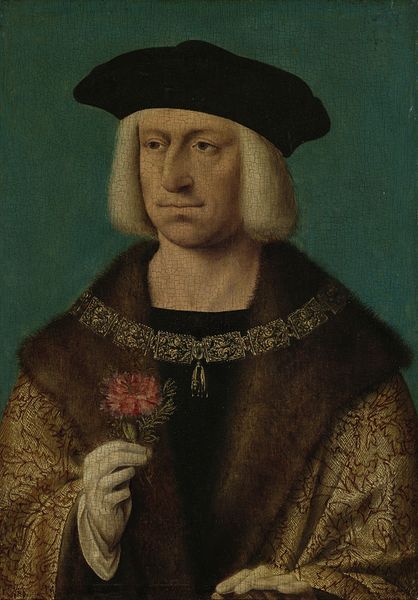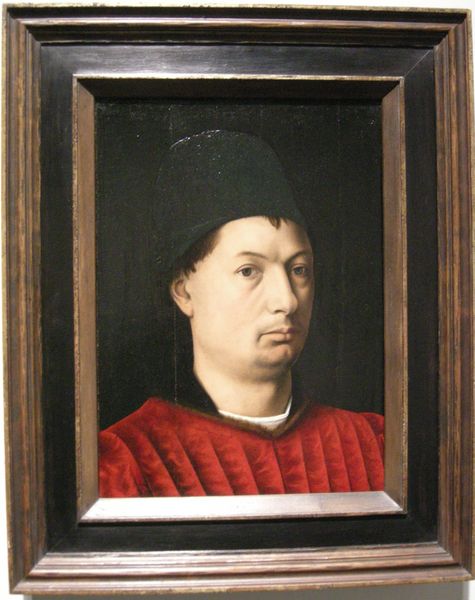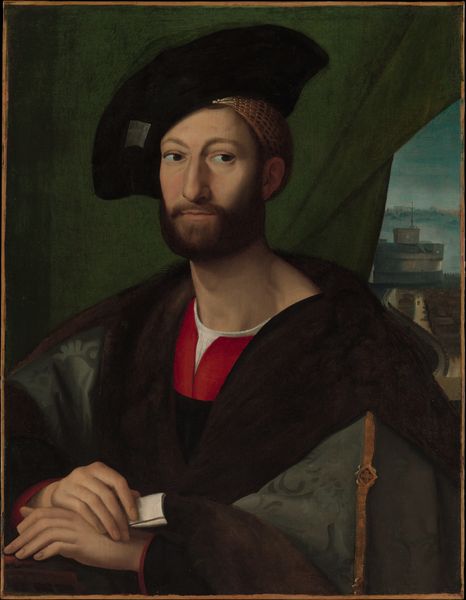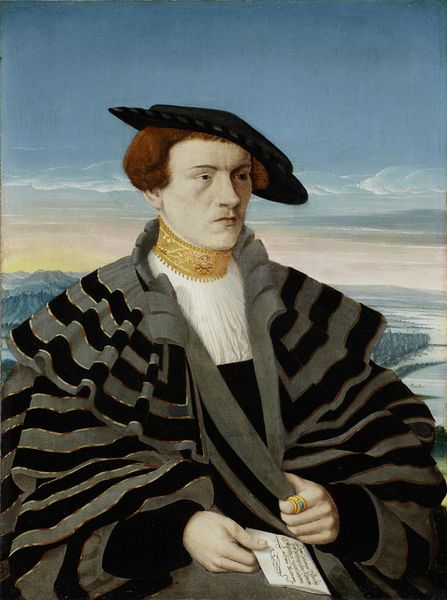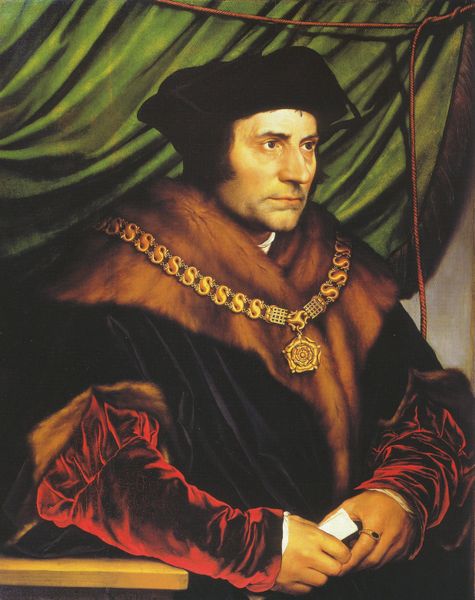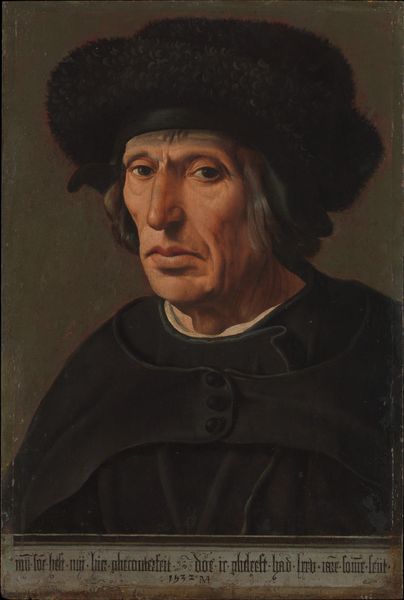
oil-paint
#
portrait
#
oil-paint
#
figuration
#
oil painting
#
history-painting
#
italian-renaissance
Dimensions: support height 45.7 cm, support width 43.4 cm, sight size height 44.9 cm, sight size width 40.8 cm, frame height 57 cm, frame width 52.2 cm
Copyright: Rijks Museum: Open Domain
Editor: This is "Portrait of a Man" by Joos van Cleve, dating from around 1520 to 1530. It's an oil painting. I am struck by how composed the sitter seems. What stands out to you in terms of composition? Curator: The formal construction pivots on a carefully balanced asymmetry. The figure's face is presented in a near-profile, yet the eyes subtly engage the viewer, establishing a visual tension. Notice the artist’s rendering of light and shadow – observe the textures, and note how they define the form and depth. Editor: Yes, I see that. What is the effect of the precise details? Curator: Precision enhances the mimetic effect but does it solely reside in achieving photorealism? Consider how van Cleve has meticulously rendered the fur trim, each strand seemingly distinct, which plays against the smoother expanse of the background. What semiotic systems might these textural contrasts invoke, beyond mere representation? Editor: Well, it definitely highlights the richness of the sitter's clothing, setting him apart. The painting seems like a statement. Curator: Precisely. Consider then, how color and its manipulation contribute. The deep reds and blacks offer gravitas while setting off the man's fair skin and the almost unsettling cerulean hue of the background. How would a different tonal palette alter your impression, do you think? Editor: It's hard to imagine it any other way. It all works so harmoniously together, from color, line, and texture to the asymmetrical balance in its overall construction. Curator: Agreed. Through such intricate constructions, "Portrait of a Man" transcends a mere likeness, engaging the viewer in an analytical assessment of form and meaning.
Comments
No comments
Be the first to comment and join the conversation on the ultimate creative platform.
